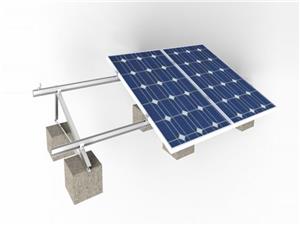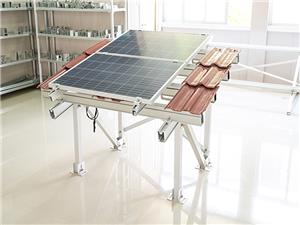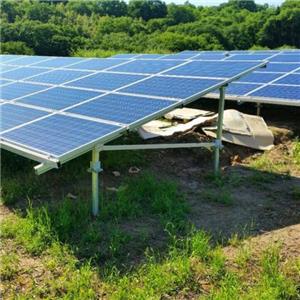Types of Solar Panel Mounting Stuctures
Types of Solar Panel Mounting Stuctures
Mounting stuctures are essential for the appropriate design and function of a solar photovoltaic system. They provide the structural support needed to sustain solar panels at the optimum tilt, and can even affect the overall temperature of the system.
Based on the selection of the solar mounting structure, the cooling mechanism will be different. Ground mounted solar panels will have better air flow from both sides, therefore, they will cool off easier than roof mounted panels, and this difference will affect the overall temperature control of solar panels and their efficiency.

Furthermore, the decision on the most appropriate type of the solar panel mounting system will also affect the final cost of the project. The installation of the roof mounting may even imply modifications to your house structure that could increase upfront costs.
Moreover, depending on the mounting system that you use, efficiency of the solar system can increase or decrease, as ground mounted systems provide better tilt maneuverability than roof mounted panels, and therefore, affect the total power output that your solar system will provide throughout the year.
It is important to know which type of solar panel mounting system is the best one for you.
Ground mounted solar systems
As the name implies, your solar system will be located on the ground.
The main advantage of ground mounted systems is that there is a wide range of options to choose from, depending on your location, your needs and the proposed design.
Ground mounted solar racking options you can choose from are:
1) Foundation mounts
Foundation mounts are the most common ground mounted structures.
Their installation consists of preparing the land for excavation. Excavation is needed to put vertical pipes ,ground screws or mechanical tubing surrounded by a concrete foundation in place.
This installation requires the site assessment and geotechnical analysis of the soil to the determine whether it is strong enough to hold the mounted structure. Depending on the type of soil (crystalline bedrock, sedimentary rock, gravel, sand, etc.), the foundation pressure will differ.
So, the soil type determines whether concrete foundation, helical pile or ground screws are needed to anchor the solar system in place
2) Ballasted footing mounts
If the soil is not suitable for drilling or excavation, the best solution is to use a ballast mount system.
Ballast mounting consists of a pre-cast concrete block anchored to the ground.
This structure is widely used in residential solar panel installations
Roof mounted solar systems
Roof mounted solar panels are the most common selection for most households.
Generally, roof mounted systems are less expensive than ground mounted systems, because the main structure needed to sustain the panels is the rooftop itself. This saves costs that otherwise would rise higher due to the aluminum or steel structures needed to support ground mounted panels.
Solar panel installation suitable for sloped roof
Most houses have a sloped roof design.
Therefore, the solar mounting structure needs to adjust solar panels to an inclined surface. In order to do so, manufacturers offer several options:
1) Railed mounting system
The most common roof mounted structure of all. Consists of attaching a set of rails to the rooftop.
Each solar panel is then attached to the rails through a set of clamps. The rails are secured to the rooftop by screws and bolts.
2)Rail-less mounting system
This type of installation directly uses bolts and screws to secure each panel to the roof. Its advantage is that manufacturing and shipping costs are reduced, which makes the installation faster.
Solar panels can be placed in the way selected by installer, because they are not as limited in their positioning as they would be with the rails.
The main downside of the rail-less system is the learning curve of the installation. This requires installers to be experienced in performing rail-less mounting systems.
Furthermore, it is advisable to avoid the use of rail-less when the panels are to be installed on crooked or tile roofs. It is also important to know that rail-less systems imply more attachment points. At the end, this could end up with more holes in your roof .
However, market trends seems to be changing. Rail-less systems are becoming more attractive for investment purposes than the railed mounts–mainly because the long term savings of rail-less systems seem to be much higher than the rail mounted .
3)Shared-rail mounting system
This type of mounting system works the same as the railed system. The difference lies in the number of rails needed to be installed.
While railed systems for two solar panels row use four rails in total, shared-rail systems use only three rails — by using two rails on the edges and one in the middle that shares the two rows.
Solar panel installation costs and time are reduced by using this technique, as one or two rails are no longer needed and neither are the mid and end clamps.
Flat roof
Flat roofs are often found on commercial or utility buildings. But there are also many households with flat roofs that require different approach than sloped roofs.
The main mounting system used on flat roofs is known as the Flat Roof Ballasted Racking System.
Among the greatest advantages of this mounting type is fast and easy installation and no need (or if, very few) for perforations in the roof. It also offers some grade of flexibility to adjust the tilt typically between 5° and 15° .




